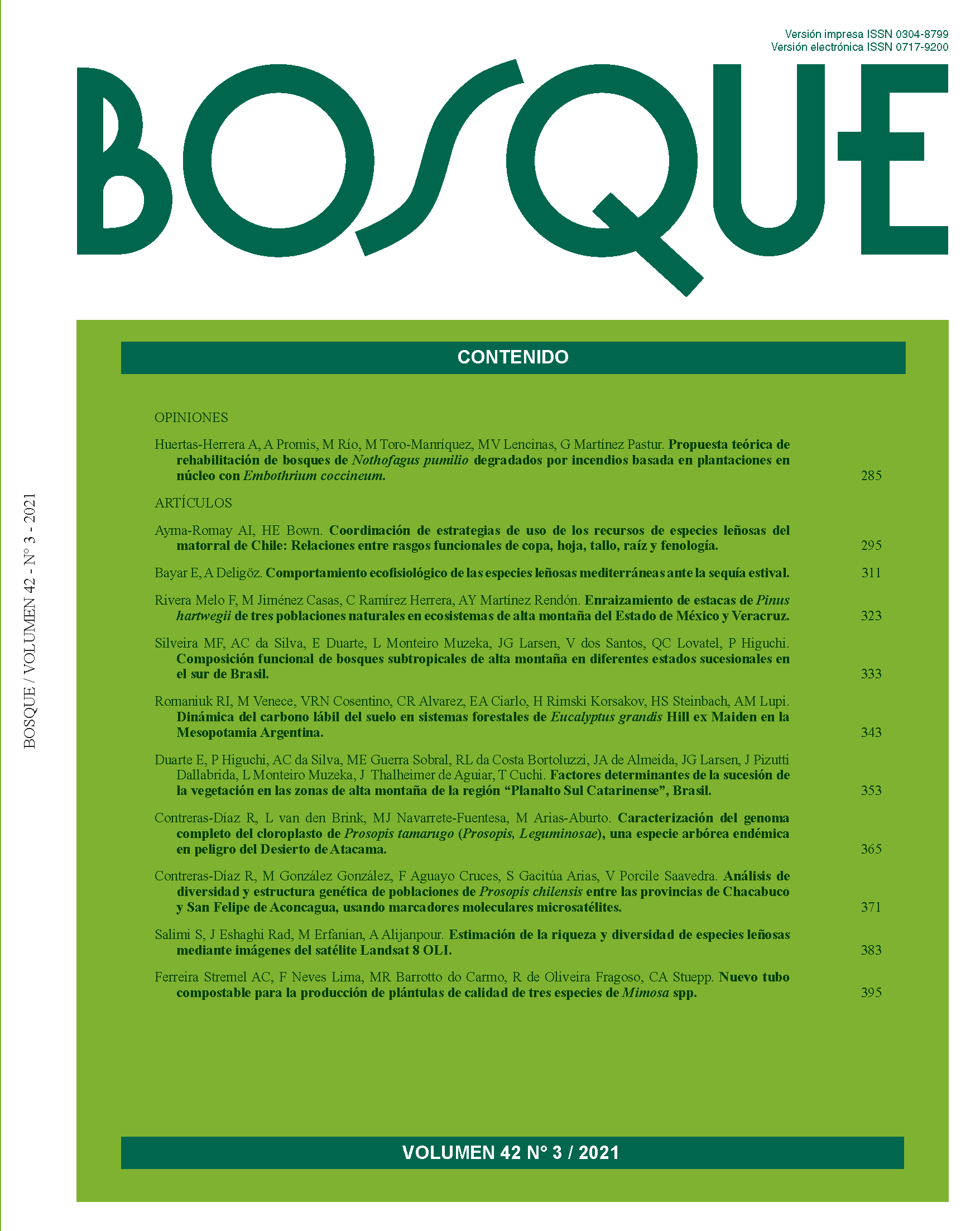Ecophysiological behavior of Mediterranean woody species under summer drought
Main Article Content
Abstract
This paper investigated the effect of summer drought conditions on physiological and biochemical parameters in Pinus nigra subsp. pallasiana, Pinus brutia, Quercus infectoria and Crataegus monogyna under field conditions and determined seasonal changes in those parameters. The study focused on soil water content, soil temperature, midday water potential, proline, total soluble sugar and photosynthetic pigment (chlorophyll a, chlorophyll b, chlorophyll a+b and carotenoid) contents during the growing period. Seasonal changes in those parameters in Pinus nigra subsp. pallasiana, Pinus brutia, Quercus infectoria and Crataegus monogyna were determined under the same environmental conditions in the natural forest area of the western Mediterranean region. P. nigra, P. brutia, Q. infectoria and C. monogyna had similar seasonal changes in physiological responses, though they had different seasonal changes in biochemical responses in natural habitat. Crataegus monogyna had the lowest midday water potential at all sampling dates. In general, Q. infectoria had the highest photosynthetic pigment content, whereas P. nigra and P. brutia had the lowest. P. nigra and P. brutia (coniferous) had lower photosynthetic pigment content and higher midday water potential than those presented by Q. infectoria and C. monogyna (broad-leaved) during the short-term dry period. The results showed that P. nigra and P. brutia (coniferous) were more sensitive than Q. infectoria and C. monogyna (broad-leaved) during summer drought in the natural forest.

